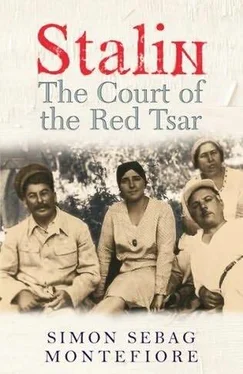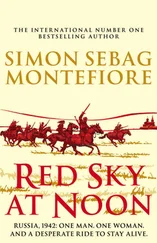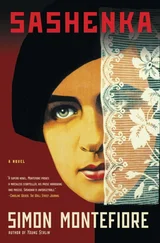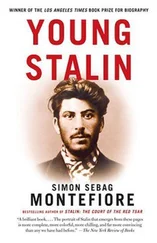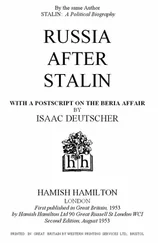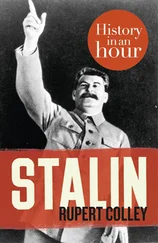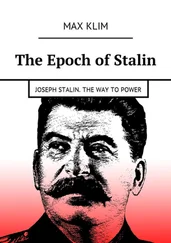Ten days later, Stalin swooped to her aid, telling the Ukrainian bosses: “Pay attention to Comrade Nikolaenko (look at her letter). Can you protect her from this audience of hooligans? According to my information, Glaz and Timofeev really are not especially trustworthy. Stalin.” Those two men were presumably arrested while Kosior survived for the moment. 7
The regions were soon killing too many, too quickly: Khrushchev, [121] Khrushchev was as fanatical a Stalinist terrorist as it was possible to be during the thirties yet his ability to destroy incriminating documents, and his memoirs, have shrouded his real conduct in mystery. A. N. Shelepin, ex-KGB boss, testified in 1988 that Khrushchev’s death lists had been removed by the secret policeman I.V. Serov. Two hundred and sixty-one pages of Khrushchev’s papers were burned between 2 and 9 July 1954.
Moscow leader, effectively ordered the shooting of 55,741 officials which more than fulfilled the original Politburo quota of 50,000. On 10 July 1937, Khrushchev wrote to Stalin to request shooting 2,000 ex-kulaks to fulfill the quota. The NKVD archives show him initialling many documents proposing arrests. By spring 1938, he had overseen the arrest of thirty-five of the thirty-eight provincial and city Secretaries, which gives some idea of this fever. Since he was based in Moscow, he brought death lists directly to Stalin and Molotov.
“There can’t be so many!” exclaimed Stalin.
“There are in fact more,” replied Khrushchev, according to Molotov. “You can’t imagine how many there are.” The city of Stalinabad (Askabad) was given a quota of 6,277 to shoot but actually executed 13,259. 8
But mostly, they were killing the wrong people. The regional bosses selected the victims, finding it irresistible to liquidate their opponents and preserve their friends. Yet it was precisely these “princes” with their entourages that Stalin wished to destroy. Thus the First Secretaries’ initial blood-letting not only did not save them: it provided an excuse for their own eradication. It was only a matter of time before the centre unleashed a second wave of terror to eradicate the “princes” themselves.
Only Stalin’s personal viceroys, Zhdanov in Leningrad and Beria in Transcaucasia, did not require this “help.” Zhdanov was another enthusiastic believer that Trotskyites had infiltrated Leningrad, though he sometimes mused on cases: “You know I never thought Viktorov would turn out to be an Enemy of the People,” said Zhdanov to Admiral Kuznetsov, who “heard no doubt in his voice, only surprise… We spoke… as of men who had passed beyond the grave.” He oversaw the arrest of 68,000 in Leningrad. As for Beria, this professional Chekist oversaw his initial quota of 268,950 arrests and 75,950 executions. The quota was later raised. Ten percent of the Georgian Party, which was particularly well known to Stalin, were killed. Beria distinguished himself by personally performing the torture of Lakoba’s family, driving his widow mad by placing a snake in her cell and beating his teenage children to death. 9
The solution was the despatch of Stalin’s favourites to destroy the “princes”; also a useful test of a magnate’s loyalty. There was no better blooding than a trip to the regions. Like the warlords of the Civil War they set off riding shotgun in armoured trains packed with NKVD thugs. Mikoyan, Foreign Trade and Food Supply Commissar, enjoys the reputation of one of the more decent leaders: he certainly helped the victims later and worked hard to undo Stalin’s rule after the Leader’s death. In 1936, however, Mikoyan praised the executions of Zinoviev and Kamenev—“how just the verdict!” he enthused to Kaganovich—and in 1937, he too signed death lists and proposed the arrest of hundreds of his officials. Throughout Stalin’s reign, Mikoyan was shrewd enough to avoid intrigues, eschew ambition for the highest offices, and with his sharp intelligence and prodigious capacity for work, concentrate on his responsibilities: he knew how to play the game and do just enough.
The magnates saved friends but they mainly saved them in 1939 in a different environment. Andreyev’s anteroom, his daughter claimed, “was full of those he helped” but Kaganovich honestly admitted that “it was impossible to save friends and relatives” because of “the public mood.” They had to kill a lot to save a few. Mikoyan probably did more than most, appealing to Stalin about his friend Andreasian who had been accused of being a French agent by the moronic investigators because his first name was “Napoleon.”
“He’s as French as you!” joked Mikoyan. Stalin burst out laughing. [122] Such absurdities abounded: in her terrible labour camp, Bukharin’s widow encountered this spirit when another prisoner informed on her because she owned a book named Dangerous Liaisons that was presumed to be a deadly espionage guide.
Voroshilov, who was responsible for so many deaths, passed on the appeal of a friend’s arrested daughter to Stalin himself who wrote on it as usual: “To Comrade Yezhov, check this out!” Her father was released and called to thank Voroshilov, who asked: “Was it terrible?”
“Yes, very terrible.” The two friends never discussed it again.
Stalin was so besieged with requests that he passed a Politburo decree banning appeals. If a leader intervened to save a friend, the vital thing was to avoid him falling into the hands of another bloodthirsty grandee. Mikoyan managed to save one comrade and begged him to leave Moscow immediately but the Old Bolshevik, with all the punctiliousness of a knight who must have his sword returned, insisted on getting his Party card back. He called Andreyev who had him rearrested.
Perhaps Mikoyan’s kindnesses reached Stalin’s ears for he suddenly cooled towards him. In late 1937, he tested Mikoyan’s commitment by despatching him to Armenia with a list of three hundred victims to be arrested. Mikoyan signed it but he crossed off one friend. The man was arrested anyway. Just as he was speaking to the Yerevan Party meeting, Beria arrived in the room, to watch him as much as to terrorize the locals. A thousand people were arrested, including seven out of nine Armenian Politburo members. When Mikoyan returned to Moscow, Stalin warmed to him again. 10
All the magnates set off on bloody tours of the country. Zhdanov purged the Urals and Middle Volga. Ukraine was unfortunate enough to welcome Kaganovich, Molotov and Yezhov. Kaganovich visited Kazakhstan, Cheliabinsk, Ivanovo and other places, spreading terror: “First study… shows the Obkom Secretary Epanchikev must be arrested at once…” began his first telegram from Ivanovo in August 1937, which continued: “Right-Trotskyite wrecking has assumed broad dimensions here, in industry, agriculture, supply, healthcare, trade, education and political work… exceptionally infested.” 11But this was nothing compared to the killing frenzy of the two most prolific monsters on tour.
Andrei Andreyev, now forty-two, small, moustachioed and hangdog of countenance, had failed to rise to the challenge of the Soviet railways but he came into his own running the CC Secretariat with Yezhov. One of the rare proletarians among the leadership, this quiet Tchaikovsky addict, mountaineer and nature photographer, married to Dora Khazan, to whom he wrote loving postcards about their children, became the unchallengeable master of these murderous road shows.
On 20 July, he arrived in Saratov to ravage the Volga German Republic: [123] After interviewing Andreyev and Dora Khazan’s daughter Natasha and hearing of his innocence of all crimes, the author came upon this damning file. Andreyev’s notes and letters have survived because unlike his fellow criminals, such as Kaganovich, Malenkov and Khrushchev, he was out of power after Stalin’s death when the others managed to destroy so many incriminating documents.
“All means are necessary to purge Saratov,” he told Stalin in the first of a stream of excited, fanatical telegrams. “The Saratov organization meets all decisions of CC with great pleasure.” This was hard to believe. Everywhere he discovered how the local bosses “did not want to discover the terrorist group” and had “pardoned exposed Enemies.” By the next day, Andreyev was frantically arresting suspects: “we had to arrest the Second Secretary… On Freshier, we have evidence he was a member of a Rightist-Trotskyite organization. We ask permission to arrest.” One group consisted of “twenty, very obstructively working in the Machine Tractor Station. We decided to arrest and prosecute two of the directors” who turned out to be part of a “Right-kulak organization” that had “wrecked tractors” or rather they had worked slowly since “only 14 out of 74 were ready.” At 11:38 that night, Stalin replied in his blue pencil: “Central Committee agrees with your proposals about prosecution and shooting of former MTS workers.” Twenty were shot. Three days later, Andreyev boasted to Stalin that he had found “a Fascist organization—we plan to arrest at once the first group of 50–60 people… We had to arrest the Premier of the Republic, Luf, for proven membership of Right-Trotskyites.” He proceeded to Kuibyshev and then to Central Asia where he removed all the leaderships since Stalin had told him: “Generally, you can act as you consider.” The result was that in Stalinabad, “I have arrested 7 Narkoms, 55 CC chiefs, 3 CC Secretaries” and returning to Voronezh, he declared cheerfully: “There is no Buro here. All arrested as Enemies. Off to Rostov now!” 12
Читать дальше
